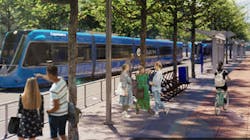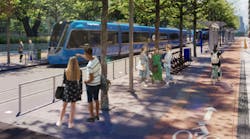Austin Transit Partnership recommends 38th Street to Oltorf to Yellow Jacket as first phase of Austin Light Rail Implementation Plan
Austin Transit Partnership (ATP) light-rail staff recommended the 38th Street to Oltorf to Yellow Jacket will serve as the first phase of the Austin Light Rail Implementation Plan. The recommendation is based on the professional expertise of the ATP team and partners at the city of Austin and CapMetro
“The Austin Transit Partnership is proud and excited to recommend the 38th Street to Oltorf to Yellow Jacket option as we work to create a transit network that propels Austin toward becoming a city that is more affordable and connected. This option best reflects the needs and values of the Austin community and lays the best foundation for future expansions and extensions in all three directions,” said Greg Canally, executive director of ATP. “We heard support from community and advocacy groups for this option as it provides critical connections for people, and we are proud to listen to and take into account that feedback.”
Prior to making its recommendation, ATP presented the five proposed options on March 21 to the public, followed by a robust, six-week long, community engagement process. During that time, ATP interacted with over 8,000 community members through 90 in-person and virtual events. Key findings of the feedback show support for the advancement of a light-rail project that prioritizes ridership, connectivity and access to opportunities and also maximizes coverage and seamless integration into other transportation systems.
“For more than 20 years, Austin has tried to build a light-rail system that brings our community closer together and today, we know what will be built for this community, and by this community, in this first phase of Austin Light Rail Implementation,” said Mayor of Austin Kirk Watson.
The 38th Street to Oltorf to Yellow Jacket option is an on-street, two-line light rail that will cross Lady Bird Lake at Trinity Street. This is the most balanced option between north, east and south Austin and will give the opportunity to connect historically underserved communities to the east, high ridership stations to the south and also connect highest ridership stations north of the river, including the UT and downtown Austin areas. Additionally, the option will leverage existing locations that already have high-capacity public transportation users, including Metro Rapid riders.
“When we come together to solve big problems, we can do big things and having a light-rail system that is equitable, reliable and affordable that is built by the people of Austin is the definition of a big thing. I look forward to advancing this recommendation and seeing the people of Austin get to work on a transformational project.”




